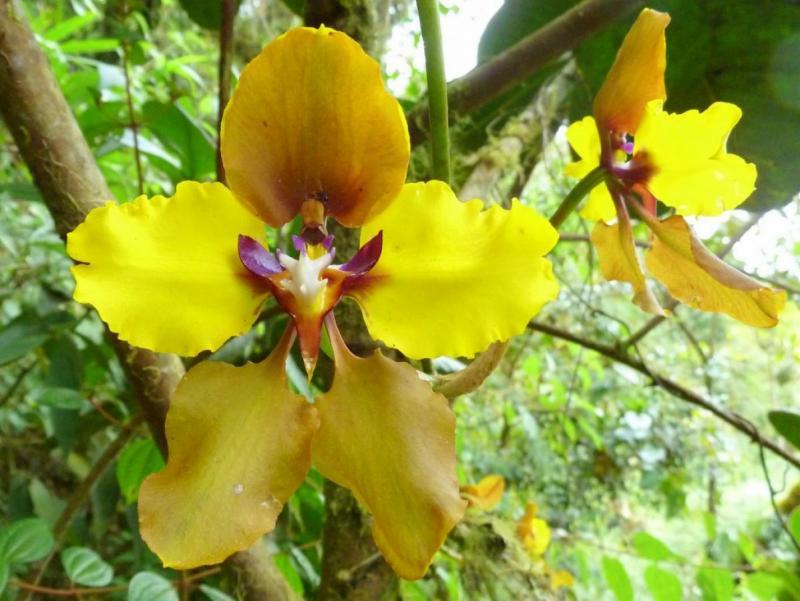Cyrtochilum macranthum
Also known as: The Large Flowered Cyrtochilum or Cyrtochilum macranthum h.v. nanum Oncidium macranthum h.v. Al Embree Cyrtochilum macranthum h.f. splendens Oncidium macranthum h.v. splendens Cyrtochilum macranthum h.f. hastiferum Cyrtochilum carrutherianum Cyrtochilum hastiferum Oncidium macranthum h.v. nanum Oncidium hastiferum Oncidium macranthum var. hastiferum in the subfamily: Epidendroideae
Native to: Cajamarca - Peru Departamento de Tolima - Colombia Departamento del Huila - Colombia Piura - Peru
General Information
The Large Flowered Cyrtochilum is a large sympodial cool to warm growing epiphytic orchid belonging to the sub family Epidendroideae native to Peru and Colombia.
Plant Description
Sympodial. Grows to 67cm. Each new growth has numerous leaves that grow to 25-50cm long. Pseudobulbs grow to 7-15cm
Flowers
Numerous long lasting blossoms appear during Autumn and Spring
Blooming Season
- Autumn
- Spring
Care Notes
These orchids have a fine root system that can quickly die back if left dry for too long, but also does not like to be kept wet, so water regularly but ensure that the mix is dry before watering.
Climate
Grows at high elevations. Rainfall ranges from 18mm to 173mm per day, heaviest in October and lightest in January. Humidity ranges from 60% to 81%, highest in October and lowest in February. Temperature ranges from 7C to 22C, highest in February (8C to 22C) and lowest in January (7C to 19C).
Watering
These orchids are sensitive to excessive watering and should only be watered when they look thirsty. Water infrequently and ensure that the roots are dry before watering. Keep an eye on them especially during hot weather as overwatering can lead to rot, whereas underwatering may result in wilting or shriveling, which while unattractive, will not kill the plant.
Fertiliser
These plants do well with slow release fertiliser at the rate of 2-3 pellets per cup (250ml) of media. Additional fertiliser during the growth period may be beneficial, but not necessary.
Potting
These plants are quite forgiving and will do well repotted ever 2-3 years. The mix should be coarse, well draining, and allow space for air to move and for roots to grow.
Alternatively, these plants will also do well mounted to tree fern or cork slabs, or mounted to trees.
Best time for repotting or mounting the orchids is the end of winter when new growths start to appear. Avoid repotting during hot weather,





















